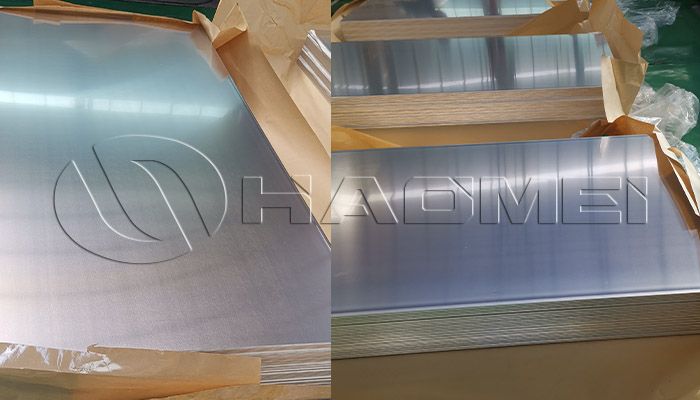At present, the widely used tank body materials of oil tankers include carbon steel, stainless steel and aluminum sheet, each of which has its own advantages. In recent years, with the introduction of the concept of lightweight, more and more manufacturers choose aluminum alloy as the tank material. The main alloy grades are 5083, 5754, 5454, 5182 and 5059. Today we focus on the requirements of the tank body material of the tanker and the advantages of the aw 5083 aluminium.
Since the aluminum alloy tanker is lighter than the carbon steel tanker, the fuel consumption during transportation is reduced. When the no-load driving speed is 40 km/h, 60 km/h and 80 km/h, the fuel consumption of the aluminum alloy tank is 12.1%, 10% and 7.9% lower than that of the carbon steel tank, thereby reducing daily operating costs. Aluminum alloy semi-trailer tank truck can reduce tire wear due to its light weight, thereby reducing vehicle maintenance costs.

Oil tanks for transporting aviation gasoline and jet kerosene must be welded with aluminum alloy, because even if stainless steel tanks are used, a very small amount of iron will enter the oil, which is not allowed.
The 16t oil tank truck developed by Mitsubishi Motors Corporation of Japan, except that the tank is welded with aluminum alloy plates, its frame (11210mm×940mm×300mm) is made of aluminum alloy profiles, which is 320kg lighter than the steel frame. The 16t oil tank truck developed by Mitsubishi Motors Corporation of Japan, except that the tank is welded with aluminum alloy plates, its frame (11210mm×940mm×300mm) is made of aluminum alloy profiles, which is 320kg lighter than the steel frame.
The cross-section of the cylinder is a circular arc rectangle, which is based on the consideration of lowering the center of gravity of the vehicle and increasing the cross-sectional area within the range of vehicle dimensions. It is welded with 5083 alloy and the thickness of the plate is 5mm~6mm. The material of the baffle and the head is the same as that of the tank body, which is also 5083 alloy.
The wall thickness of the head is equal to or greater than that of the tank body plate, the thickness of the baffle and bulkhead is 1mm thinner than that of the tank body, and the thickness of the left and right support plates at the bottom of the tank body is 6mm~8mm, and the material is 5A06.
Advantages of 5083 aluminum plate for tanker body
1. High strength. It is not easy to deform. EN 5083 aluminium has high strength, especially high fatigue resistance, high plasticity and corrosion resistance.
2. Good corrosion resistance and long service life. 5083 aluminum plate contains magnesium element, which has good forming performance, corrosion resistance and weldability. It can meet the corrosion resistance requirements of tank car body materials and has a long service life.
3. Good fire resistance and high safety. In the event of strong impact, the tank weld is not easy to crack.
4. Good environmental protection and high recycling rate. Carbon steel materials cannot be recycled and can only be treated as scrap iron, while aluminum alloy tanks can be recycled and reused, and the recycling price is also high.
Original Source:https://www.aluminumtankerplate.com/a/why-is-5083-aluminum-sheet-used-for-fuel-tanker.html

没有评论:
发表评论